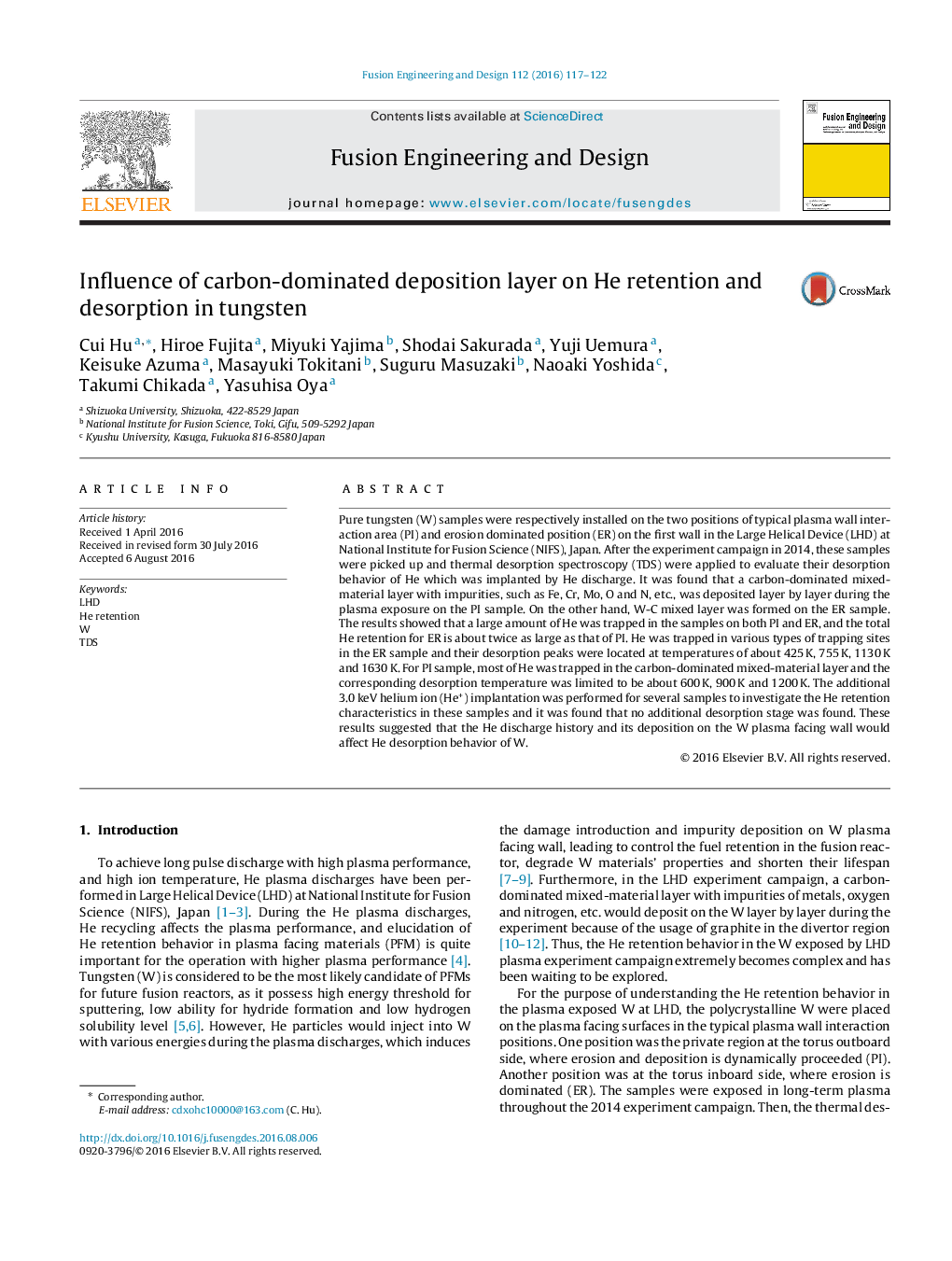| Article ID | Journal | Published Year | Pages | File Type |
|---|---|---|---|---|
| 6745349 | Fusion Engineering and Design | 2016 | 6 Pages |
Abstract
Pure tungsten (W) samples were respectively installed on the two positions of typical plasma wall interaction area (PI) and erosion dominated position (ER) on the first wall in the Large Helical Device (LHD) at National Institute for Fusion Science (NIFS), Japan. After the experiment campaign in 2014, these samples were picked up and thermal desorption spectroscopy (TDS) were applied to evaluate their desorption behavior of He which was implanted by He discharge. It was found that a carbon-dominated mixed-material layer with impurities, such as Fe, Cr, Mo, O and N, etc., was deposited layer by layer during the plasma exposure on the PI sample. On the other hand, W-C mixed layer was formed on the ER sample. The results showed that a large amount of He was trapped in the samples on both PI and ER, and the total He retention for ER is about twice as large as that of PI. He was trapped in various types of trapping sites in the ER sample and their desorption peaks were located at temperatures of about 425Â K, 755Â K, 1130Â K and 1630Â K. For PI sample, most of He was trapped in the carbon-dominated mixed-material layer and the corresponding desorption temperature was limited to be about 600Â K, 900Â K and 1200Â K. The additional 3.0Â keV helium ion (He+) implantation was performed for several samples to investigate the He retention characteristics in these samples and it was found that no additional desorption stage was found. These results suggested that the He discharge history and its deposition on the W plasma facing wall would affect He desorption behavior of W.
Related Topics
Physical Sciences and Engineering
Energy
Energy Engineering and Power Technology
Authors
Cui Hu, Hiroe Fujita, Miyuki Yajima, Shodai Sakurada, Yuji Uemura, Keisuke Azuma, Masayuki Tokitani, Suguru Masuzaki, Naoaki Yoshida, Takumi Chikada, Yasuhisa Oya,
